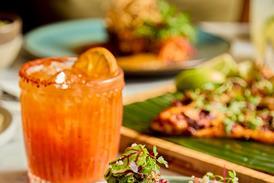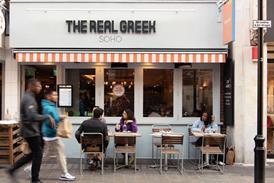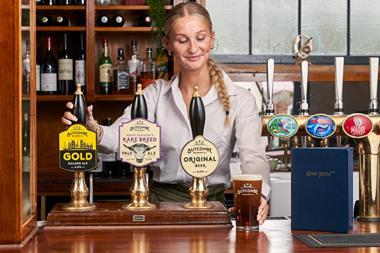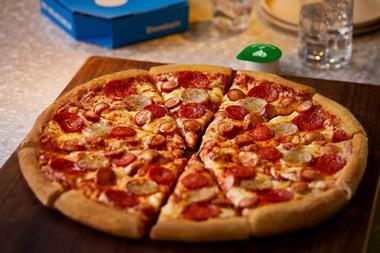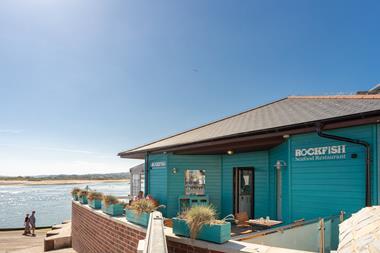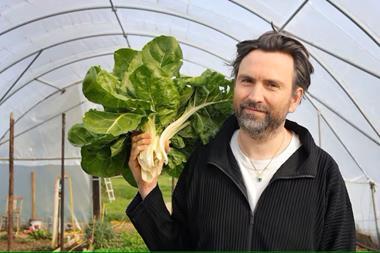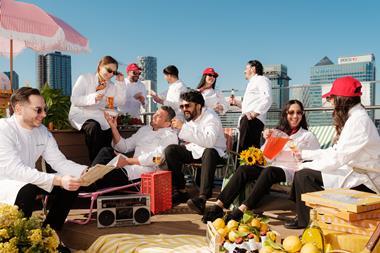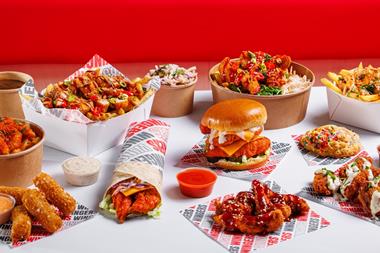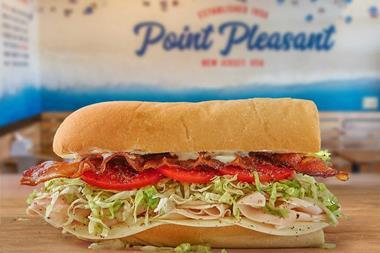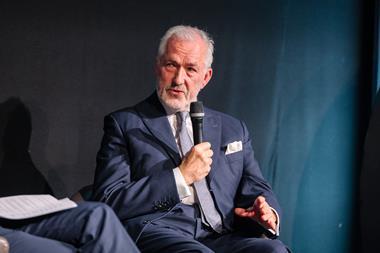Serving quality refreshment at an affordable price in the wake of the financial crash has seen the Hopdoddy chain expand out of its Texas base. Kerstin Kühn reports.
Beer and burgers are the ultimate American comfort food and there seems to be nothing changing the nation’s appetite. Consultant Andrew Freeman of Andrew Freeman & Co is so optimistic about the bright future of the burger that he called the patty melt the “sandwich of the year” in his company’s 2015 Trends Report. At the same time a recent CNBC report found that despite a few hiccups, the rapidly growing gourmet burger segment isn’t slowing down.
Right in among this growing trend is Texas-based burger chain Hopdoddy. By bringing together craft beers and gourmet burgers made from 100% natural beef, Hopdoddy has been one of the pioneers in redefining the US burger restaurant category. Named after hops – referring to craft beers – and “doddy” – the Scottish name for a cow – Hopdoddy places equal importance on the food offer and the bar, with each of its locations showcasing a selection of locally brewed beers on tap.
“The idea for Hopdoddy was born out of a bad economy and the financial crash, a time when people still wanted to treat themselves and enjoy great artisan products but without having to pay the prices charged in a fine-dining restaurant,” says the group’s president, Dan Mesches.
Founded in Austin, Texas, in 2010 by restaurateurs Guy Villavaso and Larry Foles, the chain prides itself on supporting a “mindfully-sourced” agricultural economy and preserving the artisan crafts of food, beer and spirits. “At Hopdoddy, our passion is to make burgers from the freshest available, all-natural ingredients,” says Mesches. “Our meats, which include beef, bison, chicken, lamb, turkey and tuna, are mindfully-sourced and never given growth hormones or antibiotics. We grind our meat in-house daily. Our fries are hand-cut from select Kennebec potatoes, and our buns are made from scratch and baked fresh throughout the day.”
Hopdoddy’s menu also includes salad options, shakes and fries but it’s really the burgers that are the main attraction. Top sellers include the Primetime Burger, featuring Texas Akaushi beef with Brie cheese, truffle aioli, rocket, caramelised onions and steak sauce; as well as the Terlingua Burger, with Angus beef, chile con carne, corn fritos, Tillamook Cheddar and sassy sauce; and the Thunderbird Burger made with chicken, Tillamook Pepper Jack cheese, apple-smoked bacon, avocado, seared poblanos, pico de gallo and chipotle mayo. Burgers range from $6.25-$12.25, and the average spend is around $14.
“Hopdoddy is positioned as a “better-burger” concept, with higher-quality proteins, buns and condiments than typical chain burger restaurants. It has a significantly higher average per person check than one would find at many burger
spots,” notes Ron Ruggless, Southwest bureau chief at Nations Restaurant News. “What makes the concept different is that besides the quality and innovative menu offerings, it provides a wide selection of generally local craft beers, which appeals to the locavore diner.”
The first Hopdoddy restaurant opened in Austin, Texas, in 2010, with a second following in the city in 2012. From there the group expanded to Dallas, Texas, in 2013 and it now has a total of seven restaurants: five outlets in Texas, as well as one in Scottsdale, Arizona, and one in Denver, Colorado. “We expanded to Dallas because it’s only three hours away from Austin and we picked Denver because it’s a very similar city to Austin, with a great demographic of 21 to 34-year-olds,” says Mesches.
Hopdoddy’s focus on using natural food also translates into its design. While restaurants have the feel of a casual burger joint, they combine modern design elements with a natural and organic feel. Efforts to respect the environment are apparent in all aspects of the business. The restaurants, which average about 4,000sq ft, are made up of environmentally safe and recyclable materials, including chairs made from recycled aluminium and plastic, and utilise renewable energy wherever possible.
As far as service is concerned Hopdoddy is a hybrid between fast-casual and fast-service so the restaurants often have a queue out the door. While set up for first come, first served, patrons only order from the counter once they have a table. “The service model is somewhat unique,” says Ruggless. “A guest checks in with an attendant and given an assigned table, then the patron orders at the counter and food is delivered to that assigned table.”
While they are waiting in line, guests can enjoy drinks and Hopdoddy’s waiters are constantly bringing out little samples of milkshakes, fries or margaritas to keep people entertained. “Being part of the line is part of the social experience so we make sure that guests ‘love the line’ while they wait,” explains Mesches.
Backed by private-equity firm Catterton Partners, Hopdoddy will continue to expand in 2015 and enter its fourth US state by making the move to California, with the opening of three restaurants in Playa Vista, close to Marina del Rey in west Los Angeles, in El Segundo, near Manhattan Beach, and in Newport Beach in Orange County. “People in Southern California are very concerned about what they eat so we feel it’s a great market for us to tap into,” Mesches adds. “We’ll probably also open a few more sites in the Austin area in 2015. We want to grow, but we don’t want to grow for growth’s sake. It’s about finding the right locations where we know from an operational point of view we can do a great job.”
However, as the group continues to grow, will it be able to adhere to its principles of local sourcing and only using natural meats and other craft products? “A few years ago, it probably would have been more difficult, but now we feel really confident that we can do it,” Mesches insists. “We have great relationships with a growing number of ranchers and farmers, so as far as the sourcing of our primary products goes, we feel very comfortable.
“It’s a great concept and we have a lot of fun with it but we want to keep our culture. That’s our biggest ambition,” Meaches concludes. “We know we can grow in all directions but we want to grow at a pace that’s right for our team and the concept.”














